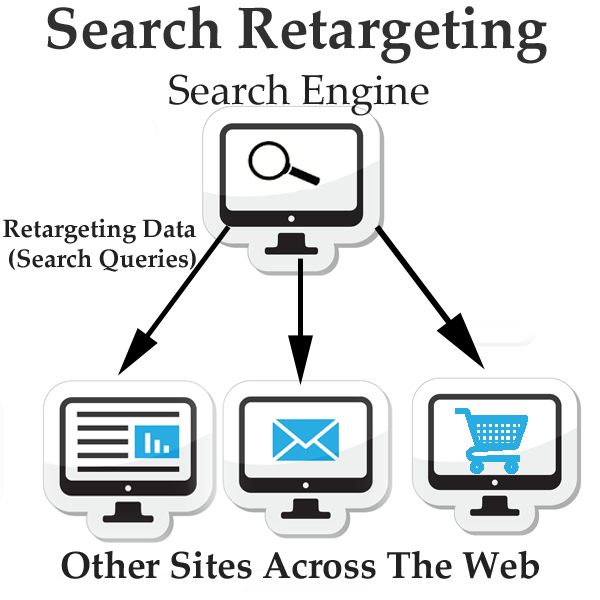One Tech Stack To Rule Them All: Potential Programmatic Pitfalls
Agencies tend to pigeonhole programmatic vendors. Some vendors are used for specific goals such as prospecting, others for specific tactics (site retargeting, etc.), and still others for the third-party data they can provide. There’s a certain logic to the approach. It makes it easier for agencies to keep things simple. Every vendor gets a nice little […]
Agencies tend to pigeonhole programmatic vendors. Some vendors are used for specific goals such as prospecting, others for specific tactics (site retargeting, etc.), and still others for the third-party data they can provide. There’s a certain logic to the approach.

It makes it easier for agencies to keep things simple. Every vendor gets a nice little line item in an Excel spreadsheet. Everything looks nice and neat.
But just because sticking vendors into tidy little boxes makes things more straightforward for the agency, it doesn’t mean that’s the best approach.
The problem with pigeonholing vendors is that, if you’re doing it right, programmatic marketing can’t be broken down into neat categories. There are gray areas where two or more different tactics or data sets will overlap.
This means that to run a fully optimized programmatic campaign, you need all the different aspects of the campaign working together — a feat that’s nearly impossible if you’re relying on a long list of different vendors.
Agencies might be more justified in relying on the multi-vendor approach to programmatic if there weren’t a good alternative. But, in fact, a number of providers — Google, Adobe, IBM, Oracle, and my own employer, Chango — either have complete platforms or are working toward building platforms that can handle all of a brand’s goals and tactics with one coherent strategy.
A great programmatic vendor is an all-purpose problem solver that first understands what marketers are trying to achieve — be it prospecting or retargeting — and then uses all available data to arrive at that goal. Working with one provider gives you the advantage of developing a single holistic strategy — rather than half a dozen disparate ones — and working together to put it into action.
What happens when too many vendors are involved in a campaign? Let’s have a look.
When Prospecting Meets Site Retargeting

Take, for example, the difference between prospecting (“customer acquisition” in marketer speak) and site retargeting. Site retargeting isn’t prospecting because the customers aren’t entirely new — you’re targeting users who have already visited your site.
But there are a few areas where it can be difficult to draw the line between the two. Say a brand owns multiple web properties. If you’re running a prospecting campaign for Walmart that’s designed to find customers looking for grills, you might want to target anyone who visits the grill section at Sam’s Club.
This is prospecting because the Sam’s Club customers haven’t been to Walmart.com; but it’s also, in essence, cross-site retargeting. And if you’ve got one vendor focused exclusively on retargeting and another exclusively on prospecting, you’re going to lose the chance to acquire these customers.
When Search Retargeting Is Confused With Site Retargeting
Or better yet, take the case of search retargeting. When it comes to search retargeting, things can get tricky, in part, because even a lot of agency types who should know better still don’t understand how it works.

In fairness, the terminology can get confusing. Because it’s called search retargeting, many people think the practice amounts to retargeting visitors who come to a site based on their inbound search activity.
In fact, search retargeting is not a form of site retargeting but a prospecting tactic that looks for new customers to target based strictly on the terms they’ve searched. In other words, it’s not where site and search targeting meet but where display targeting meets SEM.
And that’s not all. Sometimes the challenge is not simply in understanding the distinctions, but in knowing when to use one tactic or another.
For example, what’s the best approach for customers who have been inactive for a very long time (more than a year)? Is it still effective to use site retargeting for such users, or should they fall back into the prospecting pool?
When Site Retargeting Gets Better With Search Data
As noted above, search retargeting is not a form of site retargeting. But site retargeting can still make use of search data. An advanced site retargeting campaign, known as programmatic site retargeting, looks at dozens of variables, including both search engine terms and on-site search data, to decide whether to retarget a given user.
Simply put, site retargeting works better when you use as much data as possible, and the more vendors working on a given campaign, the less data that will likely be available for advanced site retargeting.
All of this begs the question: Why aren’t brands cracking down on agencies or working directly with sophisticated programmatic vendors that can handle all of their needs? Perhaps the best explanation is that the distinctions outlined above are sometimes lost on brand marketers, who are more preoccupied by hitting their goals, regardless of how an agency spreads out the given tasks.
So, let’s hope the message about all-purpose platforms gets out. Because this is one case where gray areas can turn out to be a very good thing.
(Stock images via Shutterstock.com. Used under license.)
Contributing authors are invited to create content for MarTech and are chosen for their expertise and contribution to the search community. Our contributors work under the oversight of the editorial staff and contributions are checked for quality and relevance to our readers. MarTech is owned by Semrush. Contributor was not asked to make any direct or indirect mentions of Semrush. The opinions they express are their own.
Related stories